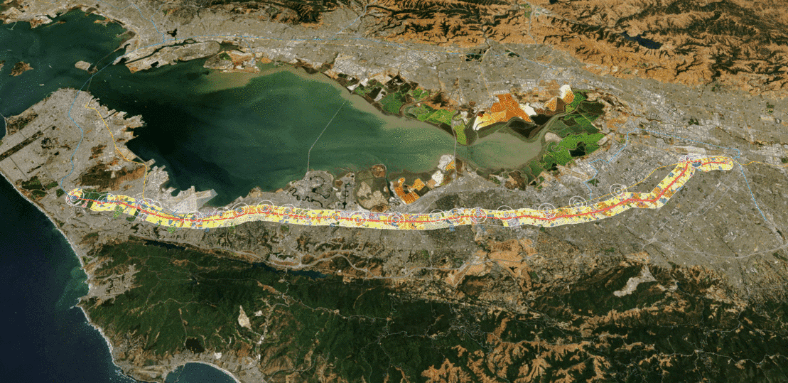
We are honored to be featured in National Geographic’s April 2019 cover story, “To Build the Cities of the Future, We Must Get Out of Our Cars.” In an effort to uncover how we can reshape cities for a brighter future, National Geographic Author Robert Kunzig joins UrbanFootprint Co-Founder Peter Calthorpe for a drive down one of Silicon Valley’s main corridors, the El Camino Real, to witness the impacts of auto-oriented urban design firsthand.
Remaking healthy cities means being thoughtful about their shape and fighting the sprawl that has damaged communities around the world https://t.co/b2l2Q9LkG2
— National Geographic (@NatGeo) March 14, 2019
As Calthorpe explains, “The problem with urban environments that are auto oriented is that if there’s no choice, if the only way to get around is in a car, lo and behold, people are going to use cars too much. Too much for the climate, too much for people’s pocketbooks, too much for the community in terms of congestion, too much for people’s time. I mean, every way you measure it, it has a negative—no walking is a prescription for obesity. Air quality feeds into respiratory illnesses.”
And beyond the congestion challenges of sprawl, Silicon Valley is experiencing an acute housing shortage. As Calthorpe and Kunzig cruise the El Camino, they discuss the findings of UrbanFootprint’s El Camino Real housing and transportation study:
“Along the 45-mile stretch of El Camino between San Francisco and San Jose, within half a mile of the road, there are 3,750 commercial parcels occupied by a motley collection of mostly one- or two-story buildings… If El Camino were lined with three- to five-story apartment buildings…with stores and offices on the ground floor, it could hold 250,000 new homes. You could solve the Silicon Valley housing shortage and beautify the place at the same time, while reducing carbon emissions and water consumption and wasted human hours.”
Read on to learn more about the potential of autonomous rapid transit (ART) and how our transportation and planning choices will play an instrumental role in shaping a sustainable, resilient and equitable future for our cities.







